Secrets of My Inflight Survival Plan
You may know that I travel a lot. What you probably don’t know (and how would you since I’ve only told about three people, ever) is that I have a flight routine, which I adhere to strictly. Honestly, unless you knew this ahead of time, you would not be able to detect it at all, even if you were my traveling companion.
After watching a broadcast interview with airline personnel who talked about inflight safety and how to respond if there is an emergency in flight, I decided that my personal routine might not be so weird after all.
Natural fibers only
I wear only clothing made from cotton, linen or wool when I fly. Statistics bear out the fact that most people who die in a plane crash don’t die from the crash itself but from the related fire and smoke. Because I assume I will be exposed to both before I get to my destination, fiber content is important.
Man-made fibers like polyester, rayon and nylon don’t burn. They melt. And they melt at a fairly low temperature on the scale of melting things. I do not want my clothes melting into my skin. Cotton, linen, and wool do not catch fire quickly, which will buy me time.
Long pants, long sleeves
Exposed skin is going to be a problem in a fiery situation. Mere seconds could mean the difference between getting out of there or succumbing to the conditions. If my skin is burning my chances are reduced. I wear long cotton pants, a long-sleeved shirt, top or jacket and shoes with cotton socks. It’s my armor. Always. And if my jacket has a hood, all the better.
Aisle seat
You’ve probably guessed already, but I’ll tell you anyway. I want to be able to get out quickly. Seating in planes has gotten more crowded than ever. I always select an aisle seat close to an exit. These days every seat on the typical flight is taken. I do not want to be crammed up against the window with the middle seat occupied, unable to get past my seatmates. I want as many options as possible.
Short is good
I am a short person and in many areas of life, this is a drawback. But when it comes to crash survival, it could be beneficial. I actually had the opportunity to practice what I am about to tell you once when I boarded early, and no one was watching. The backs of the aisle seats can actually act as stepping stones.
I am short enough that I can walk along the tops of the aisle seats (crouched over, but still it works) and I believe much faster than trying to make it down a crowded aisle. I could be of great help to others if I am not on fire and I am able to move quickly. This is my justification for why I should get out before those waiting in the aisle.
Know my aircraft
I actually pay attention to the flight safety instructions. Because I fly Southwest mostly, I know the different planes pretty well.
First, I make a note of my seat location (I try to always sit in the same general vicinity for familiarity purposes). I memorize the exits the minute I get seated. I run through an evacuation in my mind.
I look at the tiny lightbulbs along the floor aisle that are mostly white, but they become red close to the exit. I always wonder how many of those bulbs might be burned out. I make a note of those seated around me and how I plan to make my exit.
Often, I opt for the Exit Row, so I read the somewhat confusing instructions printed on the wall or door for how to unlatch the escape door, what to do with it, and so on. I always assume the guy next to the window doesn’t have a clue so I practice (in my mind) how I will yell instructions at him for what to do.
No! PULL the latch … PULLLLLL!! … OK now, throw it out! NOOOO … THROW THE DOOR OUT!
It keeps me amused to anticipate how he will react.
Rest in God’s hands
Honestly, I know that my life is not in my hands. I live by the grace of God, one moment at a time. But I also believe God has given me a brain and I have the responsibility to use it fully. I want to be useful to him until the day he says, “You’re done, come on home!”

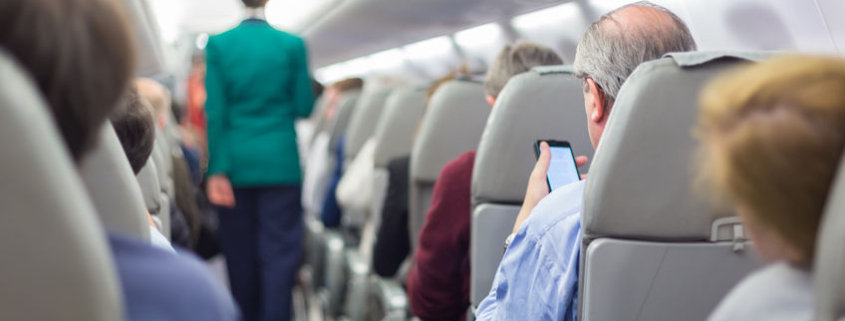

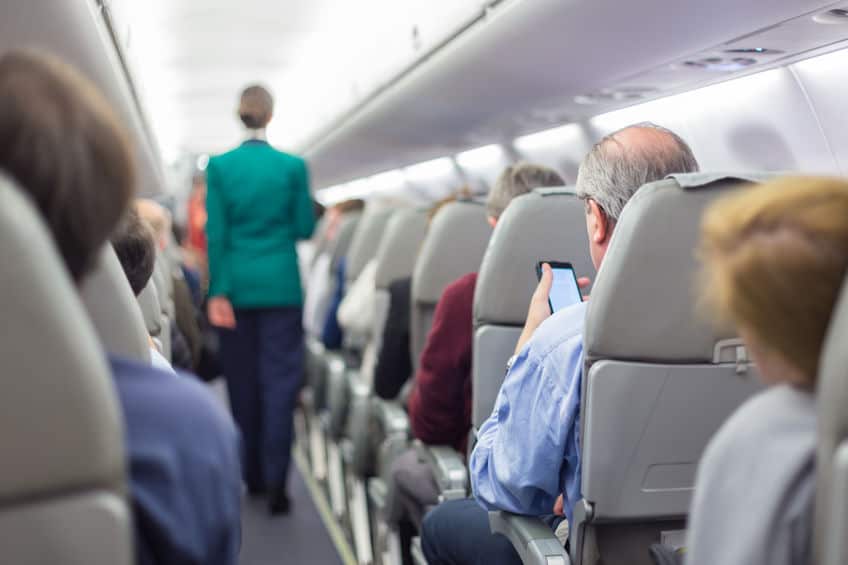



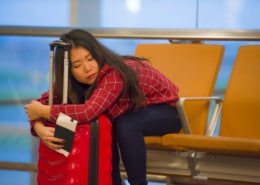
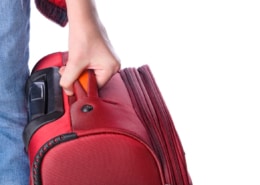



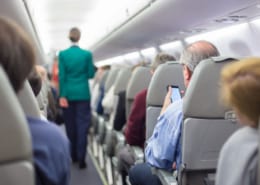
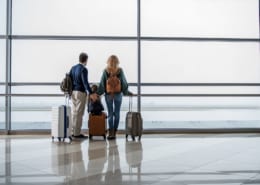


also note how the oxygen mask is to be used. in a news clip i noticed that people did not cover their mouth and nose with the mask. if you don”t cover mouth and nose you will not be getting any oxygen.
Would love to know more about what you are wearing specifically. Natural fiber items are not that easy to buy anymore. Thanks.
Great information for the public Mary!! Yes, pay attention to the flight attendants when they are doing the briefing before the flight! Yes,count the seats to the nearest exit and look for all of your possible exits! I too was a flight attendant myself!
Informative info but I be concerned about the suggestion of Benadryl because it causes drowsiness. Earplugs or earphones makes sense though
I’d like to add some safety tips for people with hearing aids who fly. A few years ago, on a flight from Salt Lake City to Atlanta, I experienced a sharp pain in my head followed by total hearing loss upon descent. My hearing gradually returned over a three-day period, but never to where it was. A hearing test by my audiologist a month later showed another 15% of permanent hearing loss. She told me the problem is “airplane ear,” where the air pressure in the middle ear and the environmental air pressure become unbalanced. Sometimes it resolves on its own, other times it can result in temporary or permanent hearing loss. It can be avoided by removing your hearing aids and inserting ear plugs immediately when the pilot announces the plane is beginning to descend; do not put your hearing aids back in until the plane lands. If you are traveling with a companion, tell him or her that you are removing your hearing aids so they can alert you to any emergency announcements. If you are traveling alone, tell a flight attendant when boarding that you will not be able to hear any announcements during descent; they will need to come to your seat to tell you. Also, for some people, taking benadryl an hour before descent begins and/or chewing gum can be helpful. I hope these tips will help others with hearing aids avoid the pain and hearing loss that I experienced.